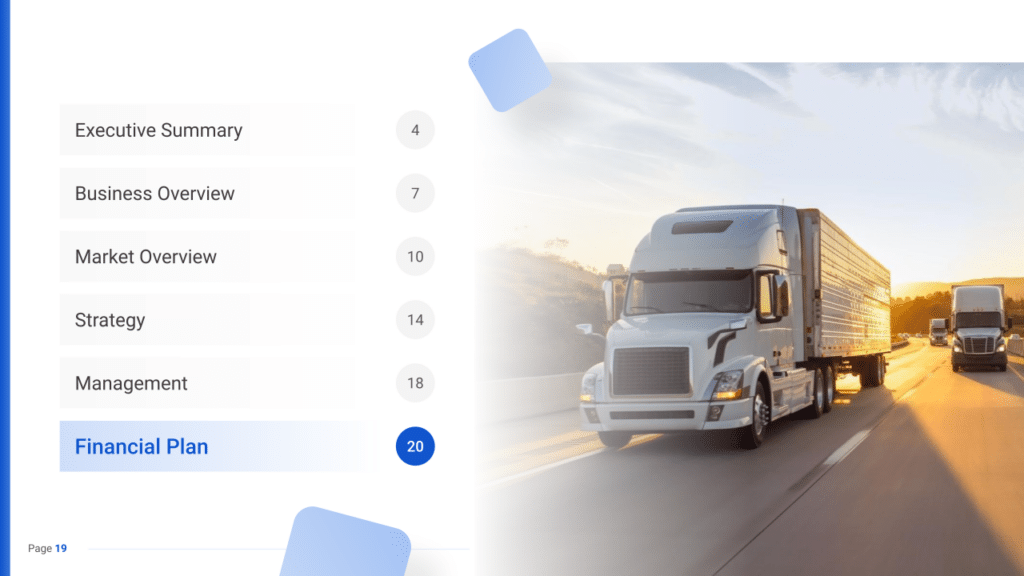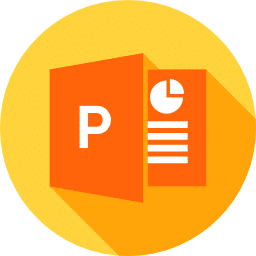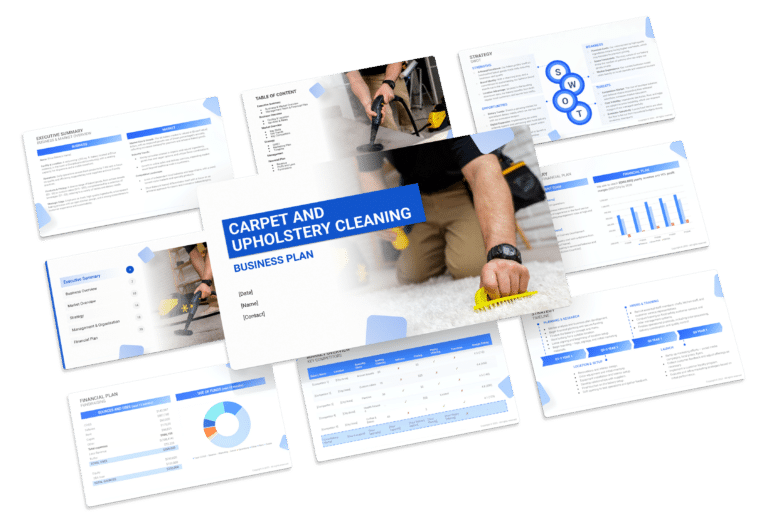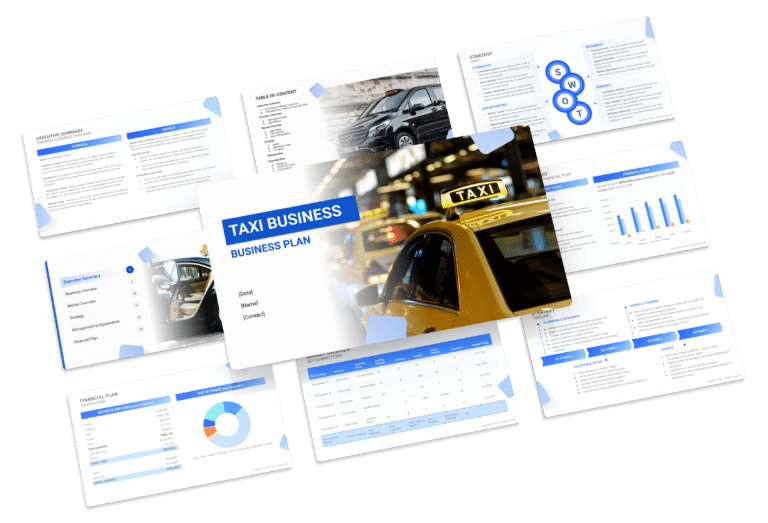Trucking Business Plan Template & PDF Example
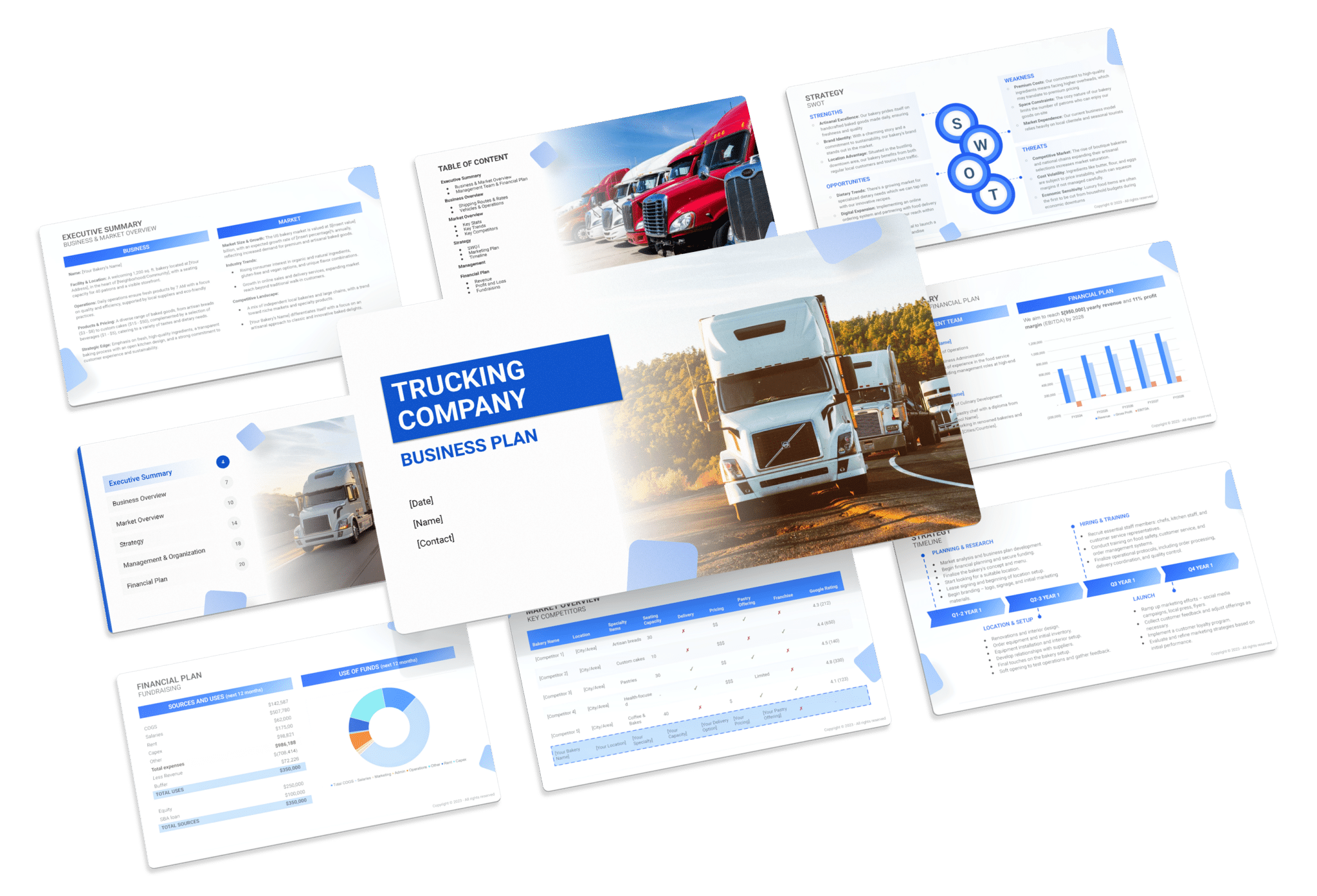
Creating a comprehensive business plan is crucial for launching and running a successful trucking business. This plan serves as your roadmap, detailing your vision, operational strategies, and financial plan. It helps establish your trucking business’s identity, navigate the competitive market, and secure funding for growth.
This article not only breaks down the critical components of a trucking business plan, but also provides an example of a business plan to help you craft your own.
Whether you’re an experienced entrepreneur or new to the service industry, this guide, complete with a business plan example, lays the groundwork for turning your trucking business concept into reality. Let’s dive in!
The Plan
Our trucking business plan is formulated to encompass all essential aspects required for a thorough and strategic framework. It outlines the company’s operational strategies, marketing plans, industry landscape, competition, management structure, and financial forecasts.
- Executive Summary: Provides a concise overview of the trucking company’s business model, highlighting the key aspects of market analysis, management capabilities, and financial strategy.
- Business Overview: Outlines the core operations and services of the trucking company, setting the foundation for its market presence and operational strategy.
- Shipping Routes & Operations: Describes the geographic scope and operational logistics that enable the company to provide efficient transportation solutions.
- Services & Rates: Details the specific transportation services offered by the company, along with a transparent and competitive pricing structure.
- Market Overview: Offers an analysis of the current landscape in the trucking industry, identifying the company’s position within this competitive arena.
- Key Stats: Presents crucial statistics that underscore the size, growth, and dynamics of the trucking industry.
- Key Trends: Highlights the evolving trends within the trucking sector that could influence business operations and opportunities.
- Key Competitors: Provides an assessment of the competitive environment, delineating how the company distinguishes itself from other market players.
- Strategy: Outlines the strategic framework the trucking company will employ to navigate the market and drive business growth.
- SWOT Analysis: Conducts a comprehensive examination of the internal and external factors that impact the company’s strategic positioning.
- Marketing Plan: Articulates the marketing strategies devised to enhance the company’s market reach and customer engagement.
- Timeline: Establishes critical milestones that the company aims to achieve in its journey towards expansion and market leadership.
- Management: Introduces the experienced management team at the helm, detailing their roles in steering the company towards its objectives.
- Financial Plan: Forecasts the 5-year financial trajectory of the trucking company, detailing expected revenue streams, profit margins, and the overarching financial strategy to ensure fiscal health and growth.

Executive Summary
The executive summary introduces your trucking business’s business plan, providing a succinct overview of your company and its logistics and transportation services. It should detail your market positioning, the variety of transport and logistical solutions you offer, its operational base, fleet size, and an outline of daily operations.
This section should also delve into how your trucking business will integrate into the regional or national market, including the number of direct competitors within the sector, identifying who they are, along with your business’s unique selling points that differentiate it from these competitors.
Furthermore, you should include information about the management and co-founding team, detailing their roles and contributions to the company’s success. Additionally, a summary of your financial projections, including revenue and profits over the next five years, should be presented here to provide a clear picture of your trucking business’s financial plan.
Trucking Business Plan Executive Summary Example
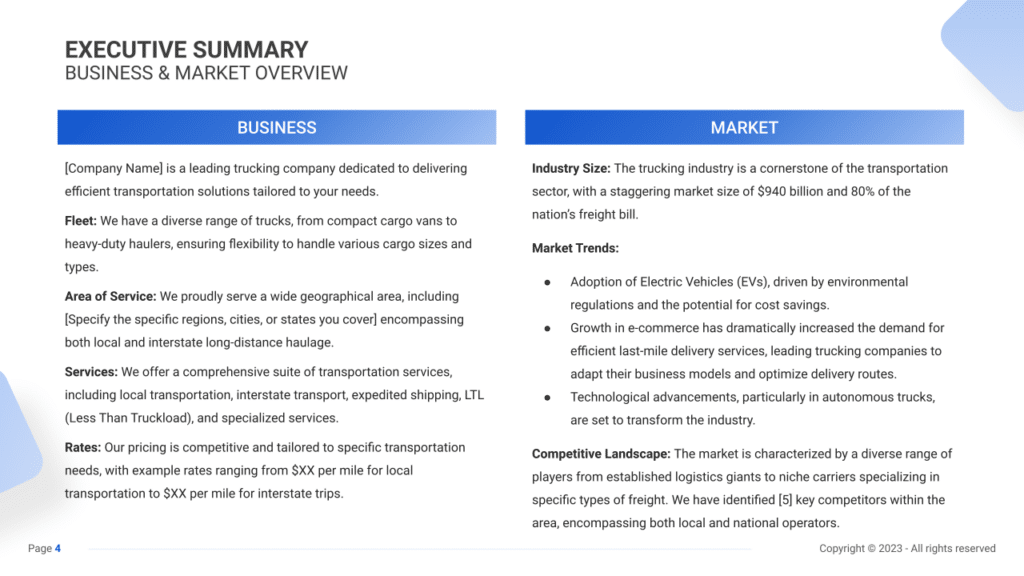

Business Overview
In your executive summary’s business overview, present clear and concise information about your trucking company. This should include the company name, headquarters, primary services, and an overview of daily operations.
These details introduce your business and set the stage for discussing its unique qualities. Your Unique Selling Proposition (USP) is what distinguishes your trucking company from the competition. It could be your commitment to sustainability, advanced tracking and logistics technology, or specialized freight services. Your USP should be the centerpiece of the executive summary, capturing your audience’s interest and highlighting the unique value your business brings to the market.
Example:
“GreenWheels Logistics,” based in Atlanta, operates a fleet of 50 advanced trucks, specializing in eco-friendly and efficient transportation solutions across the Southeastern United States. GreenWheels’ USP lies in its integration of Electric Vehicles (EVs) into the fleet and proprietary logistics software, offering clients sustainable and transparent freight services.
Market Overview
This section should outline the trucking industry’s size, growth trends, and dynamics, supported by relevant data like market value and growth rates. Highlighting industry trends, such as the shift towards sustainability or the integration of technology in logistics, provides insight into the market’s direction and your company’s place within it.
The competitive landscape is also crucial. Here, identify your main competitors and explain how your company stands out, whether through specialized services, technological advancements, or superior customer service.
Example:
GreenWheels Logistics operates within the $940 billion trucking industry, crucial for transporting goods across the nation. Despite the competitive market, GreenWheels sets itself apart by focusing on sustainable transportation solutions and advanced logistics technology, appealing to environmentally conscious businesses and those valuing real-time cargo tracking.
Management Team
The expertise of your management team is a significant asset. Highlight the key qualifications and experiences of your team members, demonstrating the depth of industry knowledge and leadership driving your business.
Example:
GreenWheels is led by founders Chris Johnson and Pat Lee. Chris, with over 15 years in logistics management, and Pat, an expert in sustainable business practices, bring a unique combination of skills to the forefront, positioning GreenWheels for success in a rapidly evolving industry.
Financial Plan
Summarize your financial objectives and forecasts, including revenue targets and profit margins, to offer a clear perspective on your company’s financial future.
Example:
GreenWheels aims for a yearly revenue of $9.2 million by 2027, with a 12% EBITDA margin. The financial strategy is centered on expanding the fleet with more EVs and enhancing our logistics software, driving efficiency and growth while maintaining a commitment to sustainability.
Business Overview
For a trucking business, the Business Overview section can be effectively divided into 2 main areas:
Shipping Routes & Operations
Briefly describe the core operational aspects of your trucking business, focusing on the geographical scope, such as regional, national, or international shipping routes.
Next, highlight the efficiency and reliability of your operations, emphasizing the strategic positioning of your hubs or depots for optimal logistics management. Explain why these routes and operations are advantageous in serving your target market and meeting customer demands.
Services & Rates
Detail the range of transportation and logistics services offered, from standard freight shipping to specialized services such as refrigerated transport, hazardous materials, or oversized loads.
Outline your pricing strategy, ensuring it reflects the value and competitiveness of your services within the industry. Highlight any flexible pricing options, bulk shipping discounts, or loyalty programs that provide added value to your clients, encouraging long-term partnerships and customer retention.
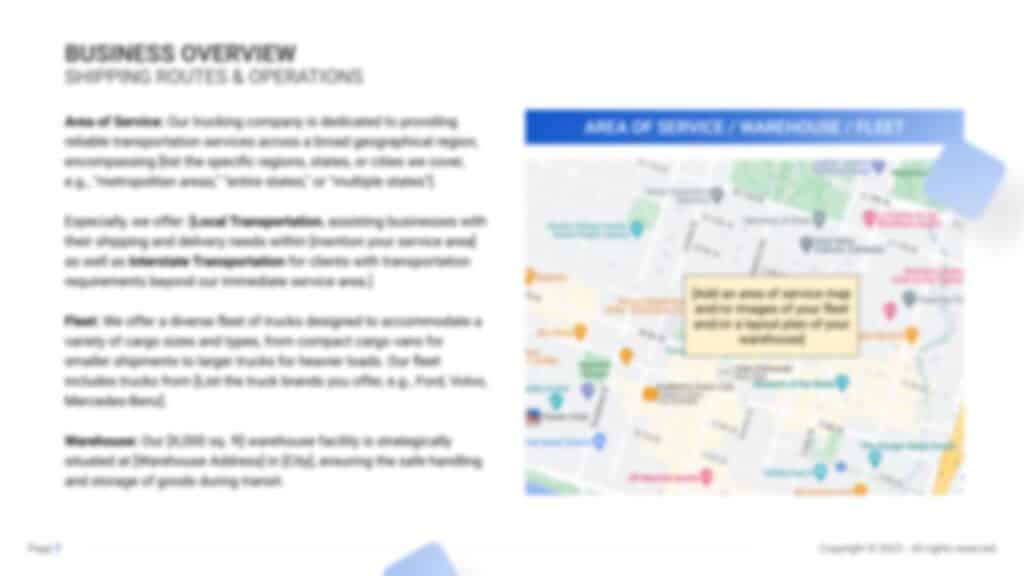
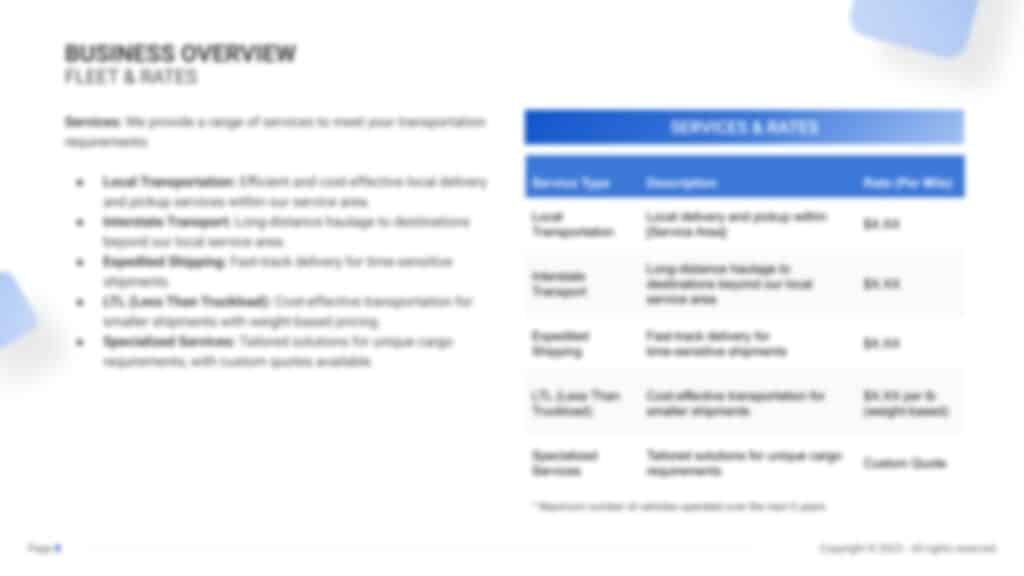
Market Overview

Industry size & growth
In the Market Overview of your trucking business plan, begin by evaluating the size of the transportation and logistics industry and its growth potential. This analysis is essential for understanding the market’s breadth and pinpointing opportunities for expansion.
Key market trends
Continue by discussing recent market trends, such as the growing emphasis on supply chain efficiency, the rise of e-commerce driving demand for shipping services, and advancements in transportation technology like telematics and autonomous vehicles. For instance, highlight the need for versatile shipping solutions that accommodate a range of delivery timelines and product types, along with the increasing interest in eco-friendly and sustainable logistics practices.
Competitive Landscape
A competitive analysis is not just a tool for gauging the position of your trucking business in the market and its key competitors; it’s also a fundamental component of your business plan. This analysis helps in identifying your trucking business’s unique selling points, essential for differentiating your business in a competitive market.
In addition, the competitive analysis is integral in laying a solid foundation for your business plan. By examining various operational aspects of your competitors, you gain valuable information that ensures your business plan is robust, informed, and tailored to succeed in the current market environment.
Identifying Competitors in the Trucking Industry
The initial step in conducting a competitive analysis for a trucking business involves identifying key players within the transportation and logistics sectors. Local and regional carriers, freight brokers, and national trucking companies should all be considered. Mapping out the distribution of competitors geographically provides insights into potential areas of market saturation or underserved regions.
Online platforms such as industry-specific forums, logistics directories, and customer reviews on platforms like Google or Yelp can provide valuable information. Assessing customer feedback might highlight specific strengths or weaknesses of competitors, offering a nuanced view of the competitive landscape.

Trucking Business Competitors’ Strategies
To gain a competitive edge, a thorough analysis of competitors’ strategies is essential. This involves scrutinizing various facets of their operations:
- Fleet Composition: Evaluate the types of trucks and equipment used by competitors. For instance, if a rival company, “Swift Cargo Solutions,” specializes in refrigerated transport, it indicates a focus on temperature-sensitive cargo.
- Route Optimization: Analyze the efficiency of competitors’ route planning. Companies like “TransLogistics Express” might prioritize advanced route optimization technologies, potentially offering quicker and more cost-effective solutions.
- Pricing Structures: Examine the pricing models of competitors. Are they positioned as budget-friendly carriers, or do they market themselves as premium services with added value? Understanding the pricing landscape helps in positioning your trucking business accordingly.
- Technological Integration: Investigate the extent to which competitors embrace technology. A company like “Innovate Haulers,” employing telematics for real-time tracking and fleet management, might have a technological advantage over others.
- Marketing and Customer Relations: Study how competitors market their services and engage with customers. Do they leverage digital marketing, have a strong online presence, or focus on personalized customer relations? Understanding these aspects helps refine your marketing strategy.
- Compliance and Safety: Observe how competitors adhere to safety regulations and compliance standards. A trucking company with a robust safety record, such as “Secure Haul Logistics,” may appeal to safety-conscious shippers.
What’s Your Trucking Company’s Value Proposition?
Crafting a compelling value proposition for your trucking business requires thoughtful reflection on its unique strengths and offerings. Consider aspects such as specialized services that set your company apart, whether it’s expertise in transporting hazardous materials, oversized cargo, or high-value goods.
Reflect on your company’s reliability, emphasizing on-time deliveries and minimal disruptions as core strengths. Highlight innovative technologies or systems integrated into your operations that enhance efficiency, tracking, and communication. Emphasize a client-centric approach to customer service if competitors fall short in this regard.
Lastly, in response to the growing emphasis on sustainability, showcase environmentally friendly practices like fuel-efficient vehicles or carbon offset programs, establishing your company as a leader in eco-conscious transportation. Identifying these distinctive features and tailoring your value proposition to resonate with market needs will not only differentiate your trucking business but also align it with the evolving preferences of the industry.
Strategy
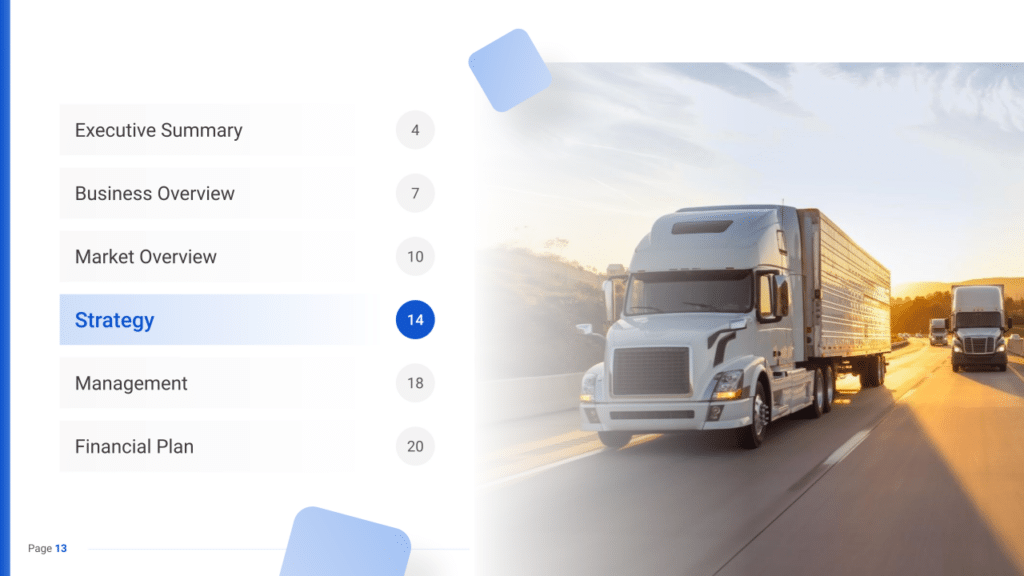
SWOT
First, conduct a SWOT analysis for the trucking business, highlighting Strengths (such as a diverse fleet and reliable service), Weaknesses (including dependency on fuel prices or regulatory challenges), Opportunities (for instance, the expansion of e-commerce and the need for more shipping solutions), and Threats (such as economic fluctuations that may impact shipping volumes or the rise of digital freight matching platforms).
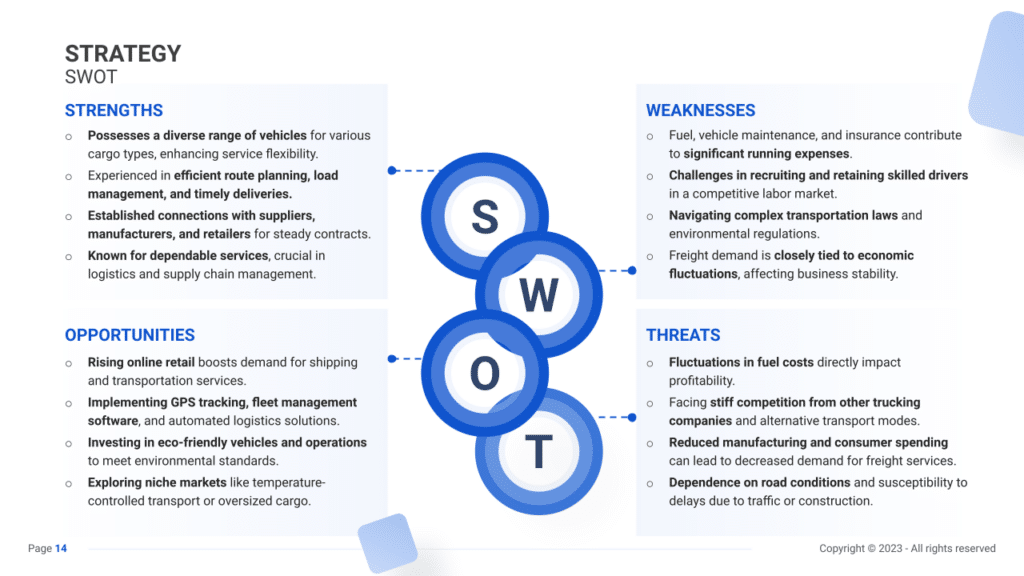
Marketing Plan
Next, develop a marketing strategy that outlines how to attract and retain clients through strategic partnerships, competitive pricing, a strong online presence, and exceptional customer service. Emphasize the importance of building a reputable brand in the logistics industry, leveraging digital marketing, and participating in industry events to network with potential clients.
Marketing Channels
Selecting appropriate marketing channels is pivotal for effectively reaching potential clients and establishing your brand in the competitive trucking industry.
Digital Marketing
Utilize online platforms:
- Website Optimization: Develop a user-friendly, informative website showcasing your services, industry expertise, client testimonials, and easy-to-use contact forms.
- Content Marketing: Create blog posts, case studies, or industry reports focusing on shipping trends, logistics insights, or success stories, demonstrating your expertise and value to potential clients.
- Social Media Presence: Use platforms like LinkedIn, Twitter, or industry-specific forums to engage with prospects, share industry updates, success stories, and thought leadership content.
- Email Marketing: Build an email list through website sign-ups or industry events, sending newsletters featuring industry insights, service updates, and special offers to nurture leads and retain clients.
Local Advertising
Connect with local businesses and industry events:
- Trade Shows and Conferences: Participate in relevant trade shows or logistics conferences to network with potential clients, showcase your services, and stay updated on industry trends.
- Sponsorships and Partnerships: Collaborate with local businesses, warehouses, or manufacturers to establish mutually beneficial partnerships, promoting your services through joint initiatives or sponsorships.
- Traditional Advertising: Utilize local print media, industry publications, or radio ads to reach a broader audience, especially within specific geographical areas or industry segments.
Promotional Activities
Engage prospective clients through incentives:
- Special Offers: Introduce promotional offers tailored to new clients, such as discounts on the first shipment or reduced rates for bulk contracts to encourage trial.
- Referral Programs: Incentivize existing clients to refer new business by offering discounts, exclusive services, or monetary rewards for successful referrals.
- Client Appreciation Events: Host client appreciation events, webinars, or training sessions highlighting industry updates, innovations, or exclusive services.
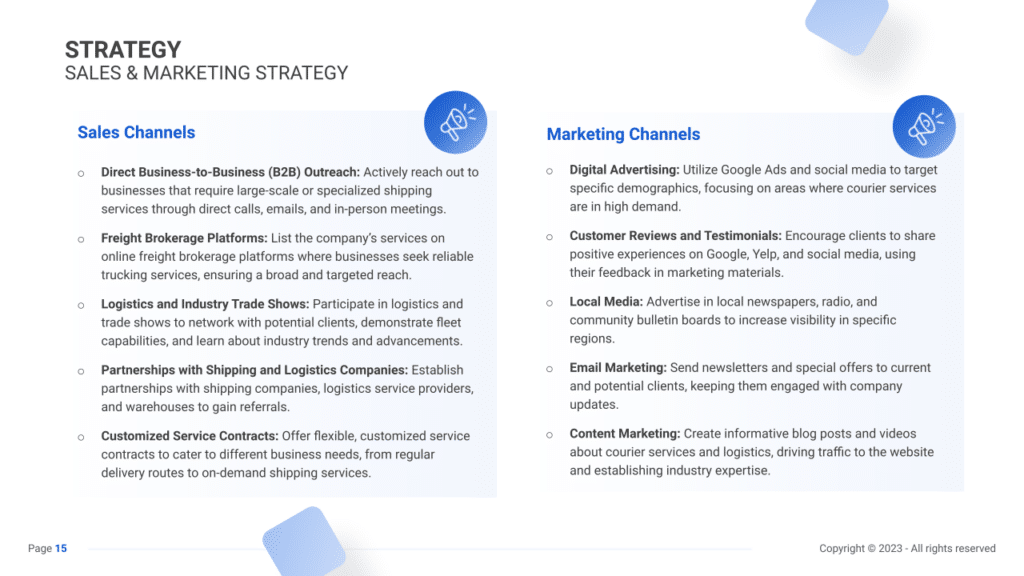
Sales Channels
Efficient sales channels are imperative for converting leads and retaining clients within the trucking business.
Client Relationship Management (CRM)
Maintain and strengthen client relationships:
- Personalized Service: Emphasize personalized customer service, offering tailored shipping solutions, dedicated account management, or 24/7 support to address client-specific needs.
- Follow-up and Feedback: Regularly follow up with clients after deliveries to gather feedback, ensuring satisfaction and addressing any concerns promptly.
Online Booking and Tracking Systems
Implement user-friendly systems:
- Easy Booking Process: Develop an efficient online booking platform or integrate a tracking system that provides transparency and convenience for clients.
- Real-time Tracking: Offer clients access to real-time shipment tracking, demonstrating reliability and ensuring peace of mind throughout the delivery process.
Customer Loyalty Programs
Encourage client retention:
- Frequent Client Benefits: Implement loyalty programs offering discounts, priority services, or exclusive offers to clients with recurrent shipping needs.
- Referral Rewards: Reward clients who refer new business with exclusive discounts, additional services, or loyalty points redeemable for future shipments.
Strategy Timeline
Finally, create a detailed timeline that outlines critical milestones for the trucking business’s initiation, marketing initiatives, client acquisition, and growth objectives. Ensure the business progresses with clear direction and purpose by setting realistic goals for service expansion, fleet enhancement, and possibly geographic extension of operations

Management
The Management section focuses on the trucking business’s management and their direct roles in daily operations and strategic direction. This part is crucial for understanding who is responsible for making key decisions and driving the trucking business toward its financial and operational goals.
For your trucking business plan, list the core team members, their specific responsibilities, and how their expertise supports the business.
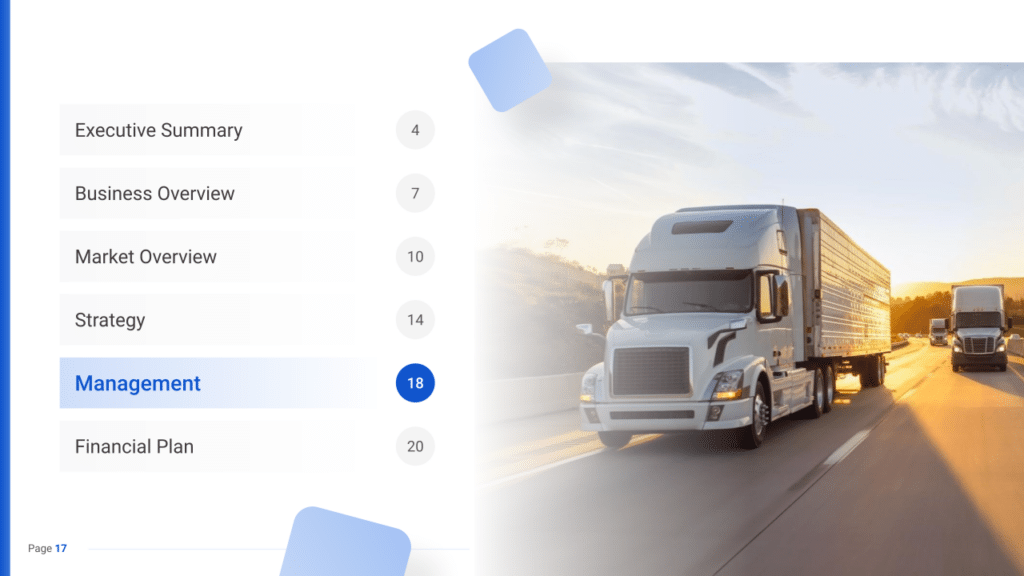

Financial Plan
The Financial Plan section is a comprehensive analysis of your financial projections for revenue, expenses, and profitability. It lays out your Trucking business’s approach to securing funding, managing cash flow, and achieving breakeven.
This section typically includes detailed forecasts for the first 5 years of operation, highlighting expected revenue, operating costs and capital expenditures.
For your trucking business plan, provide a snapshot of your financial statement (profit and loss, balance sheet, cash flow statement), as well as your key assumptions (e.g. number of customers and prices, expenses, etc.).
Make sure to cover here
_ Profit and Loss
_ Cash Flow Statement
_ Balance Sheet
_ Use of Funds
